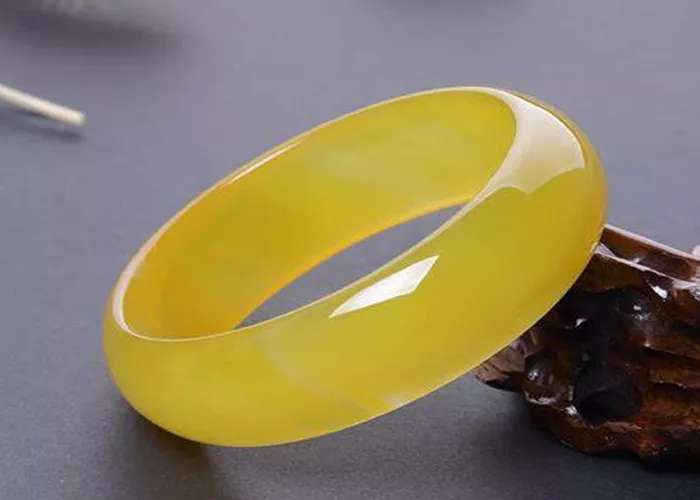Yellow sapphire is one of the most admired gemstones in the jewelry world. Its bright, golden hue makes it a favorite among designers and collectors. But how is yellow sapphire formed, and what gives it its distinctive color? This article delves into the natural processes, geological conditions, and factors that contribute to the creation of yellow sapphire. By understanding the formation of this gemstone, we can better appreciate its value and beauty in the jewelry industry.
The Basics of Sapphire Formation
Sapphire, a variety of corundum, is a mineral that forms under high pressure and temperature conditions deep within the Earth. Most sapphires are colorless initially, but trace elements can cause them to take on different hues, such as blue, green, pink, and yellow. The yellow color in sapphires is primarily due to the presence of iron and trace elements that interact with the crystal structure.
Sapphires, including yellow sapphires, form in metamorphic rocks. These rocks undergo changes due to high heat, pressure, and chemical reactions. Over millions of years, the right conditions can create these beautiful gemstones deep in the Earth’s crust.
Geological Conditions for Yellow Sapphire Formation
The specific geological conditions needed for the formation of yellow sapphires are quite unique. Sapphires form in aluminum-rich rocks like granulite or basalt, where the aluminum interacts with other minerals to form corundum crystals. The presence of iron is crucial for yellow sapphires, as this element gives the sapphire its warm golden hue.
These geological processes take place in locations where tectonic plates meet or where volcanic activity has occurred. Regions such as Sri Lanka, Myanmar, and Madagascar are known for producing high-quality yellow sapphires. These areas are rich in the geological conditions that promote sapphire formation.
How Iron Affects the Color
Iron is the key element that gives yellow sapphires their color. The yellow hue is caused by trace amounts of iron that are present during the formation of the corundum crystals. The amount of iron, along with other factors such as temperature and pressure, determines the intensity and shade of yellow in the final gemstone.
In sapphires, the iron ions replace some of the aluminum ions in the crystal structure. This substitution causes light to interact with the crystal in such a way that it reflects a golden-yellow color. The more iron present, the deeper the yellow color will be. In some cases, yellow sapphires may even have a slight greenish tint due to the combined influence of iron and other trace elements.
The Role of Temperature and Pressure
Temperature and pressure play a significant role in the formation of yellow sapphires. These gemstones are typically formed at high temperatures ranging from 1,000 to 1,500 degrees Celsius (1,832 to 2,732 degrees Fahrenheit). The pressure also needs to be immense, often exceeding 10,000 atmospheres, which is common in regions where tectonic plates are shifting.
Under these extreme conditions, aluminum and oxygen atoms combine to form the crystal structure of sapphire. The presence of trace elements, like iron, occurs when minerals in the surrounding rock interact with the sapphire’s crystal lattice, altering its color.
Where Yellow Sapphires Are Found
Yellow sapphires can be found in several countries around the world. Some of the most famous sources of yellow sapphires include Sri Lanka, Myanmar, Madagascar, and Thailand. These countries have the right geological conditions for sapphire formation and are known for producing high-quality gemstones.
Sri Lanka, in particular, is renowned for its vibrant yellow sapphires, which are often considered among the finest in the world. The country’s rich gem-bearing soil and long history of gemstone mining make it a prime location for sapphire discovery.
Mining and Extraction of Yellow Sapphires
The process of mining yellow sapphires is intricate and labor-intensive. Miners typically extract sapphires from alluvial deposits, where the gemstones have been carried by water from their original source. These deposits are often found in riverbeds, coastal areas, or in the soil beneath the surface.
Once the sapphires are found, they must be carefully sorted and processed. Only the most suitable stones are selected for cutting and polishing, as sapphires can be damaged during extraction. The quality of the final gemstone depends on the care taken during the extraction and cutting processes.
Treatment and Enhancement of Yellow Sapphires
To enhance the appearance of yellow sapphires, many gemstones undergo treatments. One of the most common treatments is heat treatment, where the sapphire is heated to high temperatures to improve its color and clarity. This process can deepen the yellow hue and remove any unwanted inclusions.
Some yellow sapphires may also be treated with other techniques such as laser drilling or fracture filling to improve their appearance. While these treatments are widely accepted in the industry, untreated yellow sapphires are generally considered more valuable due to their natural beauty.
The Value of Yellow Sapphire
The value of yellow sapphire depends on several factors, including its color, clarity, size, and origin. High-quality yellow sapphires with rich, vibrant colors are more valuable. In addition to the color, clarity is important; sapphires with fewer inclusions are prized by collectors and jewelers alike.
The origin of the yellow sapphire also plays a role in its value. Sapphires from certain regions, such as Sri Lanka, are often considered more valuable due to their historical significance and high-quality gemstones.
Conclusion
Yellow sapphires are a product of complex geological processes that take millions of years. They are formed under extreme conditions of heat, pressure, and the presence of trace elements like iron. The final gemstone’s color, clarity, and size depend on the specific conditions and the care taken during the mining and treatment processes. Understanding how yellow sapphires are formed allows us to appreciate their rarity, beauty, and value in the jewelry industry.
Related topics:
- Tanzanite vs. Sapphire: Which Gemstone Reigns Supreme?
- Which Country is Rich in Sapphire?
- What Do Sapphires Look Like in Nature?


